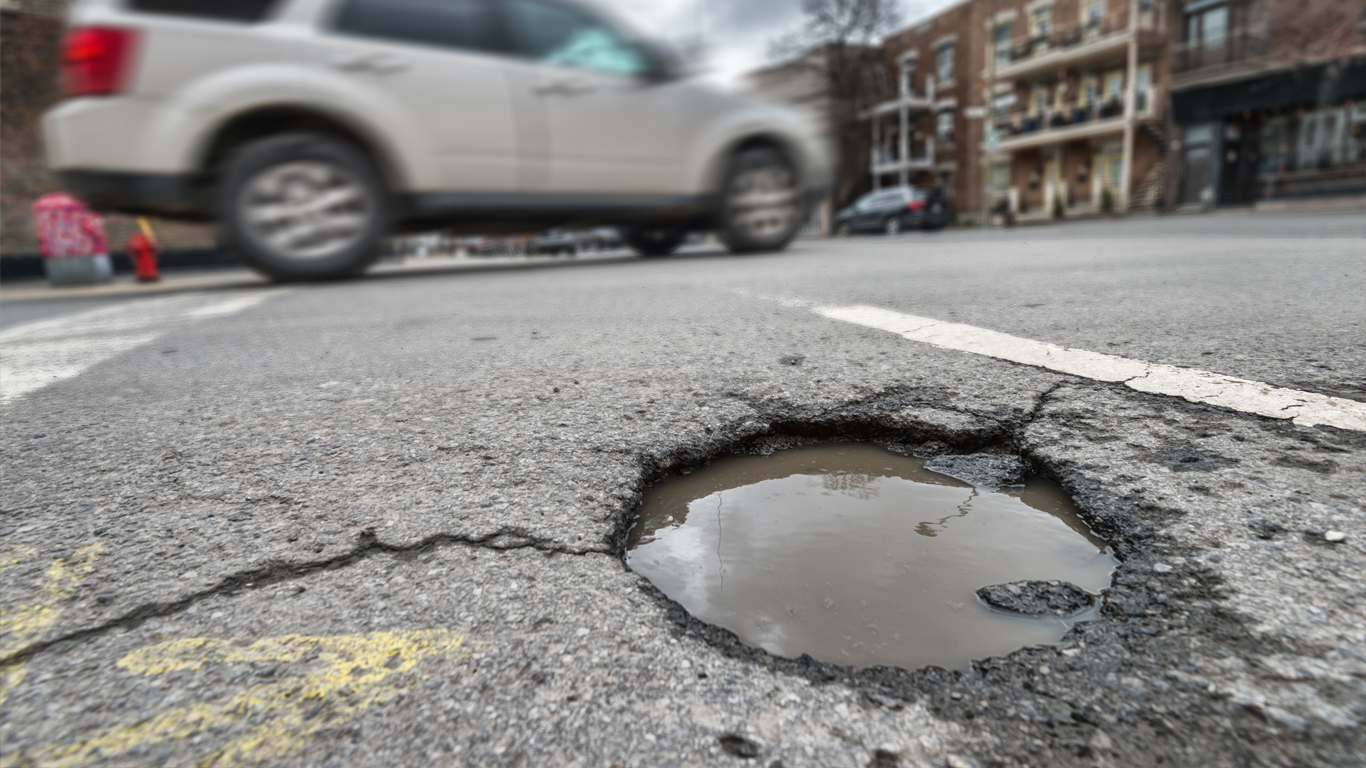
We’re well into March, which means milder weather for much of the country. And it also means more potholes popping up all over the roads, as the freeze-thaw cycle goes into overdrive. For drivers, it’s a minefield. For road crews, it can be an exhausting game of whack-a-mole!
To give you an idea of just how many potholes there are, the city of Toronto, according to its official count, repaired over 201,000 potholes on its streets in 2023, up from nearly 179,000 in 2022.
While StatCan doesn’t track the number of potholes in the country, we can give you an idea of the prices to fix them. The Industrial Product Price Index measures price changes for major commodities sold by manufacturers operating in Canada, while the Machinery and Equipment Price Index provides estimates for machinery and equipment purchased by industries in Canada.
Prices up for raw materials
Potholes are generally filled with asphalt, which mostly consists of crushed stone, sand and gravel. A small proportion of bitumen, a byproduct of crude oil, is used as a binding agent. The prices for these raw materials have increased.
In January 2024, prices for crude and diluted bitumen were up 17.8% year over year. By comparison, prices more than doubled (+105.4%) from May 2021 to May 2022, amid upward pressure on worldwide energy prices following Russia’s invasion of Ukraine. The market returned to a more normal pattern of supply and demand by the end of 2022 and into 2023.
Prices for stone, sand, gravel, clay and refractory minerals were up 8.4% year over year in January 2024, the latest increase in several consecutive months of more moderate ones compared with crude and diluted bitumen.
Asphalt products cheaper
Typically, municipalities will have asphalt on hand for smaller-scale paving jobs, such as pothole repair.
Prices for asphalt (except natural) and asphalt products, a product class that includes paving mixtures and blocks, decreased by 1.7% in January 2024 from a year earlier, the latest in several consecutive year-over-year decreases dating back to April 2023. Increases were the norm through all of 2022 and into early 2023.
Machinery and equipment more expensive, while diesel fuel is cheaper
A small crew will usually head out in a truck with either a dump bed or trailer with a load of hot asphalt to get the potholes filled.
Prices for medium and heavy-duty trucks and chassis increased by 8.5% in the fourth quarter of 2023 from a year earlier, while prices for light-duty trucks, vans and sport utility vehicles were up by 1.9%.
Over the same period, prices also increased for freight and utility trailers (+1.8%), motor vehicle bodies and special purpose motor vehicles (+1.0%) and material handling equipment (+0.5%).
Prices for diesel fuel refined in Canada declined 22.5% in January 2024 compared with a year earlier.
Spending up on transportation infrastructure in 2022
In actual dollar terms, a lot of public money is spent on road networks. In 2022, local and regional governments in Canada spent close to $9.8 billion in capital expenditures on new or improved transportation infrastructure, up from $9.7 billion in 2021.
Still, at the end of 2020, the cost to replace all municipal roads rated from fair to very poor condition was estimated at $166.8 billion.

StatsCAN app
Did you know you can read StatsCAN Plus articles and more on the StatsCAN app? If you’re already using the app, let us know what you think by leaving a review in the App Store and Google Play.
Contact information
For more information, contact the Statistical Information Service (toll-free 1-800-263-1136; 514-283-8300; infostats@statcan.gc.ca) or Media Relations (statcan.mediahotline-ligneinfomedias.statcan@statcan.gc.ca).
